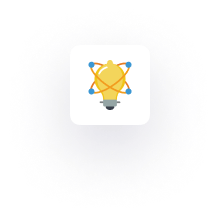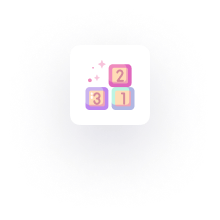GoLang has gained significant adoption since released into the technology market by Google in 2007. According to the 2022 Stackoverflow survey, Golang became the 3rd most wanted and 8th most loved programming language in the software engineering industry.
This increase in adoption makes Golang a must-learn for software engineers geared toward building innovative and security-conscious applications.
Before we dive in, let’s elucidate what Golang is and why you should consider learning it. Golang is a general-purpose, open-source compiled programming language created by Google in 2007 that is used to build faster, more reliable, and more efficient software at scale.
In addition, It is open-source software supported by Google, it is easy to learn, and you can get started almost immediately. It supports built-in concurrency, a robust standard library, and a growing community and ecosystem.
Name | custom | |
Title | Golang Essentials | |
URL | ||
description | If you want a breadth-first view of the Go programming language ecosystem, this practical guide provides the essential background to write clear and idiomatic Go. | |
This article will explore the top 5 Golang frameworks to give you an insight into what is currently in demand and what you can start learning in 2024.
Top 5 Golang Frameworks
Below, we'll be able to list the top 5 best Golang frameworks to learn in 2024 based on popularity, the number of usages, and Github stars. Using the above criteria together, we have the following list of the top 5 Golang frameworks:
Gin Framework
FastHTTP
Echo
Beego
Fiber
Let’s delve straight into exploring each of these Golang frameworks:
Gin Framework
Gin framework is the fastest full-featured web framework for Go. It is a framework written in Go and a Martini-like inspired framework. In addition, Gin performs up to 40 times faster than Martini’s performance, and it’s widely loved by developers and teams that need performance and productivity.
Some of the growth statistics of the Gin framework as of the time of writing, according to Github, include more than 61.9k Github Stars and about 79.6k GitHub Usage, accumulating a total point of 141.6k, which makes the Gin framework at the top of the chart for the top 5 Golang frameworks for 2024.

Gin Go framework statistics
name | custom | |
Title | Gin Framework: Ultimate Guide | |
URL | ||
description | You will learn Gin (the Golang framework) from scratch to an advanced level. You will learn how to build and deploy your first Gin application. | |
Features of Gin Framework
Below are some of the notable features of the framework.
Fast
The Gin framework was developed to perform up to 40 times faster than Martini’s performance by including Radix tree-based routing, a small memory footprint, and an absence of reflection, resulting in Predictable API performance.
Middleware support
Middleware is vital in any backend development languages and tools as it intercepts the request and performs certain operations before sending it to the server.
The Gin framework includes middleware support, which developers can configure to handle an incoming HTTP request by a chain of middleware and the final action. For example, Logger, Authorization, GZIP, and finally, post a message in the DB.
Error management
Error handling in software development is a vital concept that should be decided and treated in the early development stage before the codebase becomes a large and enterprise-level application.
The Gin framework provides a convenient way to handle errors during an HTTP request. Eventually, middleware can write them to a log file, to a database, and send them through the network.
JSON Validation
Gin can parse and validate the JSON of a request, checking, for example, the existence of required values.
Routes grouping
The Gin framework allows developers to organize their routes better. Separate between Authorization required from non-required, different API versions. In addition, groups can be nested infinitely without degrading performance.
FastHTTP
FastHTTP is not a framework but rather a fast HTTP package for Go. It offers high performance. Zero memory allocations in hot paths and up to 10x faster than the original net/http package from Golang.
FastHTTP is a fast HTTP implementation in Golang designed for some high-performance edge cases, such as handling thousands of small to medium requests per second and needing a consistent low millisecond response.
Some of the growth statistics of the FastHTTP package as of the time of writing, according to Github, include more than 18.2k Github Stars and about 17.2k GitHub Usage, accumulating a total point of 35.5k, making the FastHTTP package 2nd on the top 5 Golang frameworks for 2024.

FastHTTP Go library statistics.
Features of FastHTTP package
Below are some of the most important features of the FastHTTP package.
The FastHTTP package was optimized for speed as it can easily handle over 100Kqps and more than 1M concurrent keep-alive connections on modern hardware.
Most importantly, it was also optimized for low memory usage.
FastHTTP API is designed to extend existing client and server implementations.
It provides default security implementation with anti-DoS limits such as the number of concurrent connections, requests read timeout, etc.
It supports RequestCtx.Hijack for easy ‘Connection: Upgrade’
Echo Framework
The Echo framework is a minimalist, high-performance, and extensible Go web. It allows developers to build scalable APIs with support for optimized routers, middleware, data rendering, templates, etc.
Some of the growth statistics of the Echo framework as of the time of writing, according to Github, include more than 23.1k Github Stars and about 9.1k Github Usage, accumulating a total point of 32.2k, making the Echo framework 3rd on the top 5 Golang frameworks for 2024.

Echo Go framework statistics
Features of Echo framework
Below are the major features of the Echo framework.
Optimized Router
It contains a highly optimized HTTP router with zero dynamic memory allocation, which smartly prioritizes routes.
Middleware
The Echo framework supports many built-in middlewares to use or define your own. Middleware can be set at the root, group, or route level.
Data Rendering
Echo allows APIs to send various HTTP responses, including JSON, XML, HTML, File, Attachment, Inline, Stream, or Blob.
Data Binding
It also supports data binding for HTTP request payloads, including JSON, XML, or form data.
Extensible
Echo has a customized central HTTP error handling with an easily extendable API.
Beego Framework
The Beego framework is open-source to build and develop your applications in the Go way. It is a RESTful HTTP framework for rapidly developing Go applications, including APIs, web apps, and backend services with integrated Go-specific features such as interfaces and struct embedding.
Some of the growth statistics of the Beego framework as of the time of writing, according to Github, include more than 28.7k Github Stars and about 120 Github Usage accumulating a total point of 29.1k, making the Beego framework 4th on the top 5 Golang frameworks for 2024.

Beego Go framework statistics
Features of the Beego Framework
Below are some of the features that make the Beego framework unique:
Easy To Use
For core Go developers, the Beego framework is created with the core Go modules and the Go way, making it easy for Go developers to adapt and build scalable and enterprise-level applications.
With RESTful support, MVC model, and use bee tool to build your apps quickly with features including code hot compile, automated testing, and automated packing and deploying.
Intelligent
Beego framework supports intelligent routing and monitoring. It can monitor your QPS, memory, CPU usage, and goroutine status. It provides you with full control of your online apps.
Modular
The framework has powerful built-in modules, including session control, caching, logging, configuration parsing, performance supervising, context handling, ORM supporting, and request simulating. You get a powerful foundation for any application.
High Performance
With native Go HTTP package to handle the requests and the efficient concurrence of a goroutine. Your Beego applications can handle massive traffic, as Beego is doing in many productions.
Fiber Framework
Fiber is a Golang web framework built on top of Fasthttp. It’s designed to ease things up for fast development with zero memory allocation and performance in mind. The framework is an Express-inspired web framework written in Go.
Some of the growth statistics of the Fiber framework as of the time of writing, according to Github, include more than 21.7k Github Stars and about 2.4k Github Usage, accumulating a total point of 24.0k, making the Fiber framework 4th on the top 5 Golang frameworks for 2024.

Fiber Go framework statistics
Features of Fiber Framework
Below are some of the features that make the Fiber framework unique:
Robust Routing
The Fiber framework has one of the best routing systems; coming from the Express framework, the routing system is easy and smooth to work with.
Serve Static Files
Serve your static HTML, CSS, and JavaScript files easily by defining static routes. You can also serve the contents of multiple directories on the same route!
Extreme Performance
The Fiber framework uses the FastHTTP library, known as one of the fasted HTTP libraries for Golang. Your application will enjoy unmatched speed using the Fiber framework.
API-ready
The Express-like framework is great for developing APIs because it combines the simplicity of Express and the power of creating production-ready APIs.
Flexible Middleware Support
Choose from several already existing middleware or create your own! Use them to verify and manipulate certain requests in your app before they reach your controller.
Bonus
You can also research more on the following list of Golang frameworks and libraries, which promise great use cases and usefulness.
Revel
Martini
Mango
Iris
Kit
Goji
Buffalo
Webgo
Summary
Choosing a particular one for your project will solely depend on the type of project, the programming language, and team strength. Use this VPN for Mac to download free Golang courses and start your career.
This gives a rough overview of these frameworks and their trends over a year. It also gives you the knowledge of what to expect when choosing one of the best Golang frameworks to learn.
Let me know your thoughts in the comment section.



